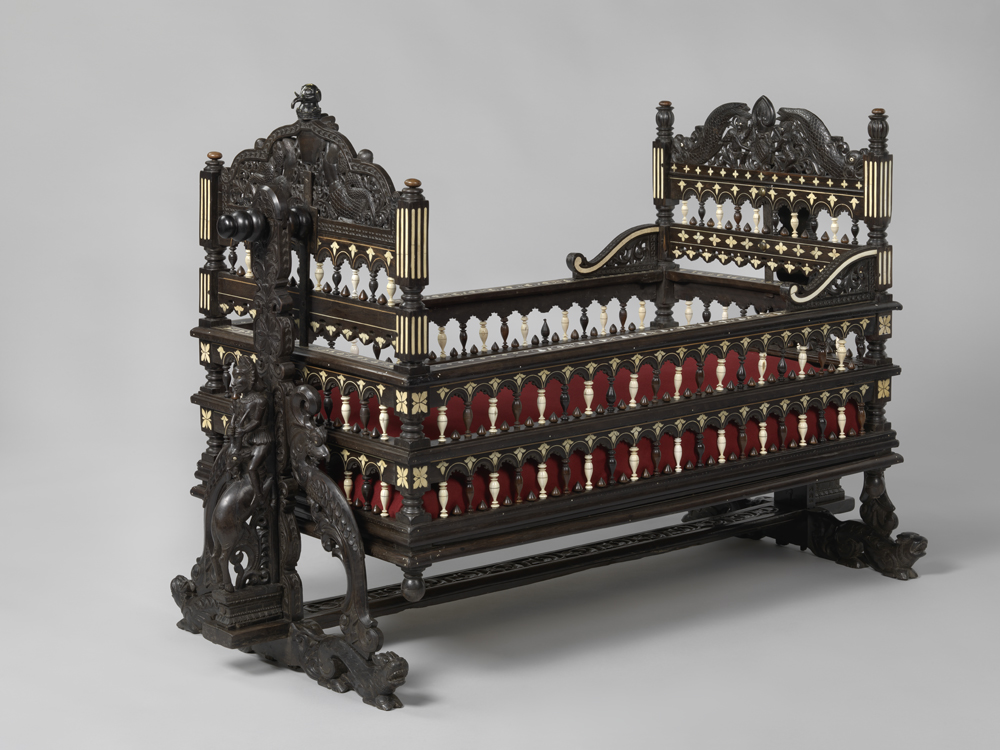Stop 12 - Cradle
Cradle from the Coromandel Coast, India, ca 1650-1700 . Ebony and ivory, 89x135x63 cm, Rijksmuseum Amsterdam BK-1966-48
Take a look at this magnificent cradle belonging to the family of a Dutch East India Company official living at the Coromandel Coast, India, more than 350 years ago.
Who might have slept in this cradle? And who guarded their sleep? Early modern Dutch parents had good reasons to be anxious about their babies because child mortality was high. Their hopes and aspirations for their children is manifest in this magnificent piece of furniture. Or perhaps it was the Indian servant who took care of the baby and who easily recognised the carvings of familiar Hindu mythological figures, such as Makara a mythological creature associated with the goddess Gange and also with Kawadeva - the god of love and desire. This figure often featured on Indian bridal gifts and the local Indian craftsman who made this cradle might have therefore felt that it was an appropriate ornament even though the child's parents were not Hindus but Christians.
We can assume that this cradle was much loved by its owners, it became an heirloom and was taken back to the Netherlands by the Dutch family when their time in the colonies came to an end and they moved back to Europe. To them the value of this cradle was not just of a material kind but had also sentimental value – it reminded its owners of the early years of their children and their time in Asia. Emotional memorabilia of this kind were frequently kept by the Dutch, so for example by the governor-general of Batavia, Cornelius van Lijn whose inventory in Holland in the mid seventeenth-century listed a “black ebony cradle inlaid with ivory” which might have looked very similar to the one in front of you.


- Next Stop
-

Stop 13 - Spice box
next